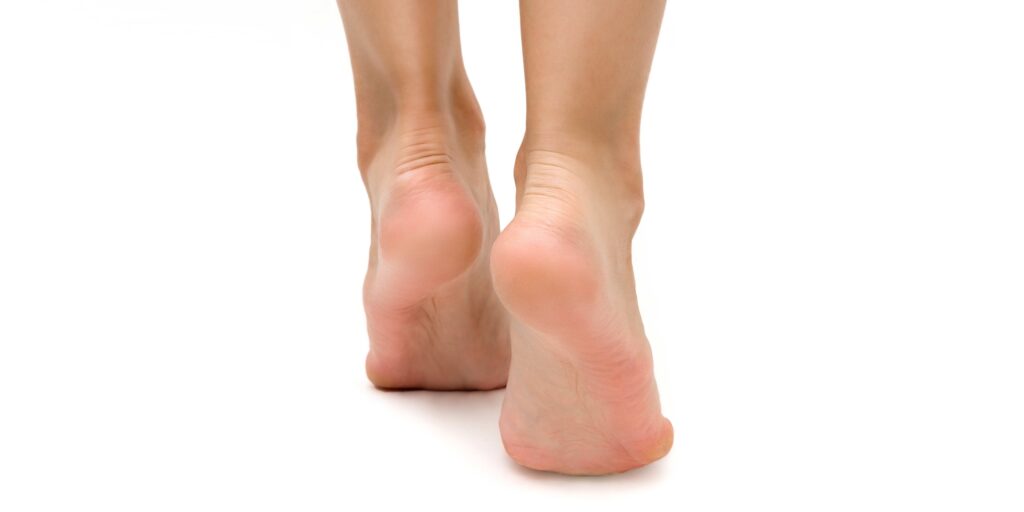Heel pain is a common complaint, often caused by either heel spurs or plantar fasciitis—or a combination of both. These conditions can impact foot health significantly, causing pain that affects daily activities. Knowing the relationship between bone spurs and plantar fasciitis is essential for achieving an accurate diagnosis and selecting effective treatment strategies.

Understanding Heel Spurs
Bone spurs, medically known as osteophytes, are bony protrusions that can develop along the edges of bones, including the heel bone (calcaneus). In cases of plantar fasciitis, bone spurs may form at the attachment site of the plantar fascia, a thick tissue band running along the bottom of the foot. Bone spurs typically develop in response to repetitive stress or strain, often due to prolonged standing, repetitive impact activities, or ill-fitting footwear. As stress accumulates over time, the body responds by forming bone spurs to protect and stabilize the affected area.
Exploring Plantar Fasciitis
Plantar fasciitis is an inflammation of the plantar fascia, the tissue band that supports the arch of the foot and absorbs impact during activities like walking or running. This inflammation is typically caused by factors such as overuse, improper footwear, biomechanical issues, or repetitive strain injuries. Plantar fasciitis can lead to persistent heel pain, especially in the morning or after extended periods of inactivity. Without proper care, the inflammation can become chronic, resulting in ongoing discomfort and limited mobility.
The Link Between Bone Spurs and Plantar Fasciitis
There is a clear relationship between bone spurs and plantar fasciitis. Bone spurs often develop where the plantar fascia attaches to the heel bone, a location under constant strain and tension. When bone spurs are present, they can exacerbate symptoms of plantar fasciitis by further irritating the surrounding tissues. This leads to increased pain, stiffness, and discomfort, particularly during weight-bearing activities. Addressing both conditions together is crucial for effective relief and improved foot health.
Diagnosis and Imaging Techniques
Accurate diagnosis of bone spurs and plantar fasciitis is essential to creating a successful treatment plan. The diagnostic process usually includes:
- Physical Examination: Our seasoned podiatrist will assess pain levels, range of motion, and foot structure to determine the potential causes of discomfort.
- Imaging Tests: X-rays, ultrasound, or MRI may be utilized to visualize bone spurs and assess any damage to the plantar fascia or other soft tissues. These imaging techniques provide crucial insights, enabling a more precise diagnosis and better treatment planning.
The combination of a thorough physical examination and imaging tests allows for a tailored approach to managing both conditions.
Treatment Approaches
Several treatment options exist for bone spurs and plantar fasciitis, ranging from conservative methods to more advanced therapies:
- Conservative Treatments
- RICE Therapy: Rest, ice, compression, and elevation are recommended to reduce inflammation and pain.
- Stretching and Strengthening Exercises: These exercises help improve flexibility, reduce strain on the plantar fascia, and can gradually alleviate symptoms.
- Orthotic Devices or Shoe Inserts: Customized orthotics provide additional support, cushioning, and proper alignment to alleviate pressure on the heel.
- Advanced Treatment Options
- Corticosteroid Injections: In cases of severe pain, corticosteroid injections may offer temporary relief by reducing inflammation.
- Extracorporeal Shockwave Therapy (ESWT): This non-invasive therapy uses targeted shockwaves to stimulate tissue healing and reduce pain, ideal for individuals with chronic plantar fasciitis who are unresponsive to conservative treatments.

Surgical Intervention
In cases where conservative and advanced therapies have not provided adequate relief, surgery may be considered. Surgical procedures aim to either release tension in the plantar fascia or remove problematic bone spurs. Surgical options are typically reserved for severe, chronic cases and are performed when other treatments fail to resolve the pain effectively.
Taking the Next Step in Foot Care
If you’re experiencing persistent heel pain or discomfort, consulting Dr. Miyazaki is an important step in protecting your foot health. Early evaluation and targeted treatment can prevent further complications and provide relief. Contact us today at 510-647-3744 to schedule a comprehensive foot evaluation and receive a personalized treatment plan tailored to your needs. Don’t suffer with pain, call our office and get on the fast track to recovery!













 With so many wonderful places to enjoy in the East Bay, you don’t want to be bogged down by
With so many wonderful places to enjoy in the East Bay, you don’t want to be bogged down by